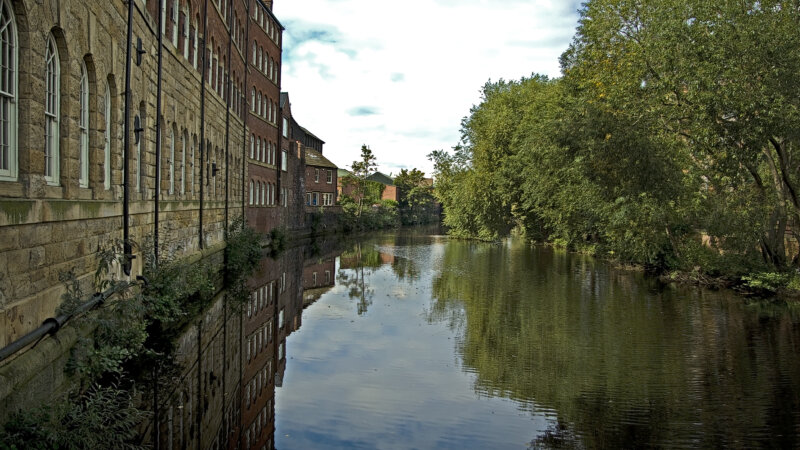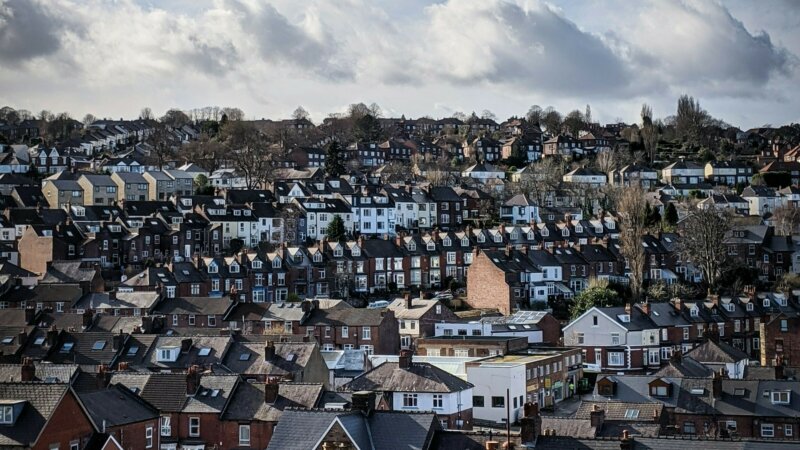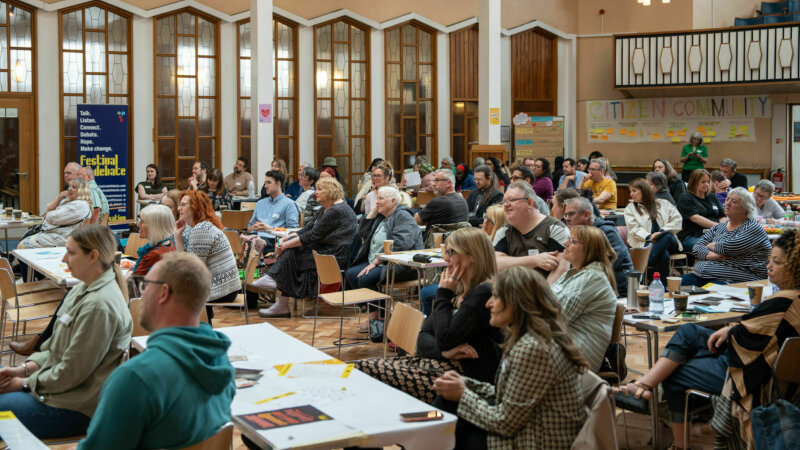Building Community Wealth in Sheffield and starting a Green New Deal
Using an innovative new model pioneered in the north, we can keep money in the local economy and help our city thrive.

Anchor institutions like the universities could play an important role in boosting the local economy.
Photo by Harrison Qi on Unsplash.Despite falling off the news cycle, the climate emergency is still a looming crisis more sinister than any that humanity has faced before. It’s being fuelled by a dysfunctional economy that works for neither people nor planet. Covid-19 has also devastated the economy, nationally and here in Sheffield, where the number of people having to claim Universal Credit has almost doubled since the start of the pandemic.
The Tory government still shows no sign it will attempt to solve the contradictions endemic in our economic system. It has adopted a superficial "green industrial revolution" policy, an attempt to greenwash the Conservative Party's legacy of environmental inaction. There’s no indication they intend to implement the policies we need to tackle ecological breakdown and rebuild our economy in a green way.
Our solution? We need local authorities that are braver than the government, and who are willing to kickstart a localised Green New Deal (GND).
We can only tackle the climate crisis at a national and international level, but change can and must begin locally. A municipal approach to creating green jobs, retrofitting housing and greening our economy can begin through a method known as Community Wealth Building (CWB).
Community Wealth Building has been used by progressive councils across the country to address social and economic inequalities and deliver a local economy that works for local people. Preston is recognised around the world as a pioneer of CWB and in 2018 was named the most improved city in the UK in terms of ‘good growth’. This model could work for Sheffield, but it should be tailored to have decarbonisation and a just transition at its heart.
A key part of CWB is the idea of ‘anchor institutions’. These are big organisations, rooted in place geographically, which can have great economic influence for good. Anchors are firmly tied to an area and cannot leave easily, as their purpose is often to provide services to the people nearby (hospitals, for example). They often employ large proportions of the local community, spend lots of money on procurement and own large areas of land in the local area.
The fact that anchors cannot easily relocate gives them a vested interest in shaping the area around them, unlike multinationals. Around 51% of people in Sheffield are employed in the public and education sector. From our two large universities to Sheffield Teaching Hospitals and Sheffield City Council, this city is rich with anchor institutions.
Anchors should not be seen merely as purveyors of services but as an integral and influential part of the local economy. Collaboratively, by anchors changing some of their day-to-day practices like maximising their spend locally, promoting recruitment from more deprived areas and acting as stewards of the living wage, real change can happen.
Sheffield could become a model city for CWB, using our geographically-rooted anchors to bind the local economy and improve its economic resilience to recession. This would help South Yorkshire weather the dual climate and coronavirus crises. This would not only boost investment within the region but ensure the wealth and benefits of a Green New Deal are shared more equitably.
Anchors are vital for CWB, as they can use their large budgets to incentivise the growth of local businesses, cooperatives and worker-owned businesses and ensure that as much of their money as possible stays in the local community.
The alternative, which happens in most cities now, is that anchor institutions procure services from large multinational corporations. The profits made from any contracts are paid out to shareholders and investors - people with no connection to the local community. More often than not, these profits end up in London, hedge funds or overseas. The money leaves the local economy and is never seen again.
But if anchors adopted a different strategy, purchasing goods and services from local, worker-owned businesses where possible, the profits from these contracts would be distributed among those very workers. This not only distributes public sector money more evenly to working people, but it also ensures that as much money as possible is kept in the local economy, as these workers then spend money locally, providing our high streets with an economic boost and creating a fairer and more circular local economy.
In Preston, £74m was retained in the city’s economy annually after it started experimenting with CWB, with £200m kept in the wider Lancashire economy. This is annual expenditure from anchor institutions which would have disappeared elsewhere without a Community Wealth Building approach.
Anchors need to realise that their approach to procurement can have profound impacts on the local economy. Sheffield City Council already has ethical procurement practices in place and has managed to ensure that 80% of its supply chain pays the real living wage to workers. Collaboration is key to creating widespread economic change and a coalition of anchors can do much more than one in isolation.
If all of Sheffield’s anchor institutions committed to ethical procurement strategies that put Community Wealth Building into practice, supply chains throughout the city could be transformed to ensure that all workers are paid the real living wage and that any public spending creates decent, well-paid jobs.
To ensure that anchors are playing a leading role in decarbonisation, they could invest in and purchase their energy from organisations like Sheffield Renewables, a local energy co-op. This would allow locally owned zero-carbon energy providers to grow, and bring money and green jobs into the local economy, all the while reducing the carbon footprint of the anchors.
Community Wealth Building can go much further than this. By creating a collaborative and interventionist approach between anchors for tackling issues of economic inequalities, they can take on a much more profound role in their communities. Anchors often hold huge pension funds, with Sheffield City Council's fund, the South Yorkshire Pensions Authority (SYPA), being worth around £9bn. We need to make these local sources of money work for local people. With the announcement that SYPA is divesting from fossil fuels, now is the perfect time to act and create a local investment bank to finance a green economic recovery and help Sheffield become a fairer, cleaner and carbon neutral city.
By investing in schemes under a Green New Deal, pension holders will directly see the impact of their pension in the local area. This has endless possibilities: solar farms on schools providing clean energy, electric buses transporting them around, better insulated and warmer homes to live in and carbon neutral businesses to work in.
These aren’t radical proposals. We’ve seen the impacts anchors can have up and down the country, from hospitals investing in solar, cooperatives implementing a ‘people powered retrofit’ to improve household energy efficiency, and local authorities pooling their resources to create a local investment bank to tackle regional inequalities.
Through Community Wealth Building, Sheffield's Green New Deal can begin today and radically transform our local economy in an environmentally just way.







